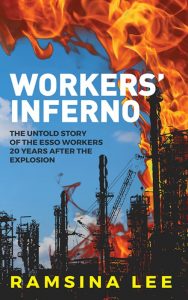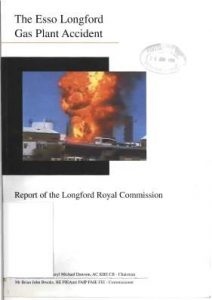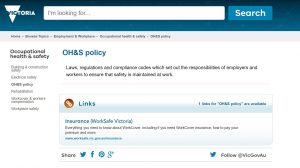 Recently the 20th anniversary of the Esso Longford disaster was commemorated in Victoria. Coinciding with this anniversary was the release of a book about the disaster and its personal aftermath, Workers’ Inferno, written by Ramsina Lee.
Recently the 20th anniversary of the Esso Longford disaster was commemorated in Victoria. Coinciding with this anniversary was the release of a book about the disaster and its personal aftermath, Workers’ Inferno, written by Ramsina Lee.
This book has been in development for many, many years and the Lee’s writing talent is on display in the structure of the book and the stories within. These stories largely linear But the multiple strands allow Lee to jump from one to the other providing a variety tone.

 Many have been claiming that the era of neoliberal economics and the associated politics is over or, at least, coughing up blood. However, occupational health and safety (OHS) is rarely discussed in terms of the neoliberal impacts, and vice versa, yet many of the business frustrations with red tape, regulatory enforcement strategies, reporting mechanisms and requirements and others have changed how OHS has been managed and interpreted.
Many have been claiming that the era of neoliberal economics and the associated politics is over or, at least, coughing up blood. However, occupational health and safety (OHS) is rarely discussed in terms of the neoliberal impacts, and vice versa, yet many of the business frustrations with red tape, regulatory enforcement strategies, reporting mechanisms and requirements and others have changed how OHS has been managed and interpreted.


 The Victorian Parliament continues to consider the
The Victorian Parliament continues to consider the 